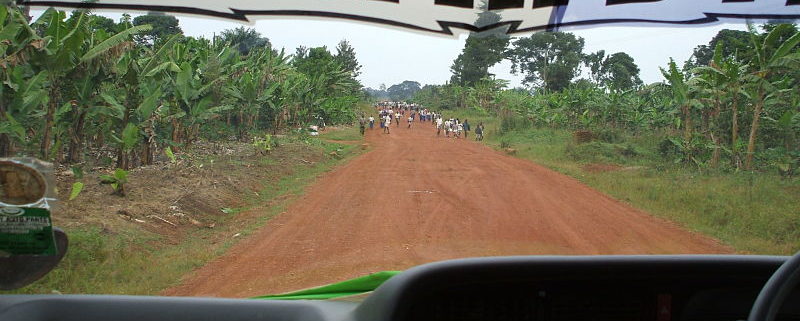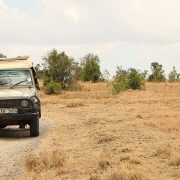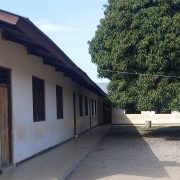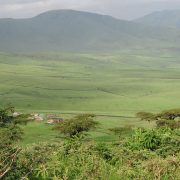Tanzania Travel Tips
If you’re planning a trip to Tanzania, here are some tips to help save you time and legwork. Any information provided here that is specific to country-of-origin is for travelers from the U.S., since that’s the case we’re most familiar with.
Weather
When choosing your travel dates, be sure to consider the weather. Most regions of Tanzania have two rainy seasons, a short and less reliable season in November and December, and a longer season of heavier rain from March through May. If you’ll be traveling in rural areas, roads may become impassable during the heavy rains, so you might want to avoid those months. Because Tanzania is just south of the equator, there’s not a lot of variation in temperature from one season to another, but if you’re not fond of hot weather, June through September will be your best bet.
Visas
Once you’ve decided when to travel and have made your flight arrangements, you’ll need to get a visa. You can find all the information you need about applying for a Tanzanian visa on the Consular Services Visa Information page of the Tanzanian Embassy in Washington D.C. If you are traveling to the northwest part of Tanzania, where CORE Tanzania’s Twegashe Primary School will be located, you might want to consider flying into Entebbe, Uganda, and then taking a six-hour bus ride to Bukoba town, rather than flying into Dar es Salaam or Kilimanjaro and then having to take another flight or bus all the way across the country. If you enter through Uganda, you will also need to obtain a Uganda visa, which you can do on the Uganda Embassy website, under the “Visa and Consular” section.
Another more economical visa option, if you will also be traveling to Kenya or Rwanda, is the East Africa Tourist Visa. This visa allows multiple entry into Uganda, Kenya, and Rwanda, and is valid for 90 days. You must apply for this visa through the embassy of the country where you will first enter East Africa. If you’re entering through Kenya, you can get the visa here; if entering through Rwanda, get it here, and if entering through Uganda, get it here. Unfortunately, Tanzania is not included in the East Africa Tourist Visa, so you will still need the individual Tanzania visa. In our experience, the processing time for the Tanzania visa and for the East Africa Tourist visa is quite short—no need to apply months in advance.
One thing to note about applying for a Uganda visa is that there is a second website where you can apply for visas directly through the Ugandan government rather than through the Ugandan Embassy in the US. If you google “Uganda visa”, this site, the “Uganda Electronic Visa/Permit Application System”, will be the first result. You can apply electronically for a Uganda visa or an East Africa Tourist visa at this site, with no need to send your passport to the embassy as is the usual procedure. However, you will not receive an actual visa, only a letter saying that your application has been approved. You must show this letter when you enter the country for final approval and payment. If you’re the type of traveler who likes to have all their ducks neatly in a row before they go, this might not be the option for you.
On the other hand, if you aren’t the ducks-in-a-row type, or if there’s not enough time before your trip to apply for an actual visa, this electronic visa approval letter may be the best option for you since as of July 2016 Uganda is no longer issuing visas upon arrival at the Entebbe Airport. You can still obtain a visa upon arrival in Tanzania at any of the four main entry points: Dar es Salaam International Airport, Zanzibar International Airport, Kilimanjaro International Airport, and Namanga Entry Point on the Tanzania-Kenya border.
Vaccinations
You can find reliable U.S. government vaccination recommendations on the Centers for Disease Control travel webpage. According to that source, there are currently no vaccinations that all travelers to Tanzania need to have, although they do say that all travelers should be up-to-date on routine vaccinations including measles-mumps-rubella (MMR), diphtheria-tetanus-pertussis, varicella (chickenpox), polio, and their yearly flu shot. According to the CDC, most travelers to Tanzania should also get vaccinated for hepatitis A and typhoid (which has an oral option for needle-phobes). Several other vaccines are suggested, but only for specific situations. Malaria prevention medication is also recommended for certain travelers, especially those traveling to regions of the country where malaria is more prevalent. The Bukoba area of northwest Tanzania is one of those regions, and we have always taken malaria prevention medication when we travel there. There are several different medications available, each with pros and cons described on the CDC malaria webpage. You might want to read up on those pros and cons so you can tell your provider which one you prefer to use. Vaccination against yellow fever is not required for Tanzania, and generally not recommended except under special circumstances. However, it is required if entering Tanzania from a country on the WHO list of countries with a risk of yellow fever virus transmission. Both Uganda and Kenya are on that list. If you’re traveling to Uganda, you’ll need a yellow fever vaccination regardless of where you’re coming from, even if you’re arriving in Uganda directly from the U.S. or Europe.
Powering your Gadgets
In Tanzania you may find either of two different types of power socket, type D and type G.
Type D sockets are also found in India and South Africa.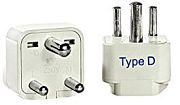

Type G sockets are the type of sockets found in the United Kingdom.
It’s not easy to find an adapter that can be used in both D and G sockets. Most of the “universal” adapters work in US/EU/UK/AU, so they have the G-type plug but lack the type D configuration. You’ll probably need to resort to purchasing two different adapters if you want to be prepared for both types of socket that you might encounter.
The standard voltage in Tanzania is 220-240V, compared to the standard 120V in the U.S., so depending on what type of gadgets you’re taking, you may need a voltage converter. Most digital devices such as laptops, cameras, and phones are designed for universal input, so a converter is not needed. Check your device label. If it says “INPUT: 100-240V, 50/60 Hz” then you are good to go without a voltage converter. The standard frequency in Tanzania is 50 Hz, as opposed to the 60 Hz frequency that is standard in the U.S. However, almost all appliances, except for things like clocks, will work fine with either frequency.

